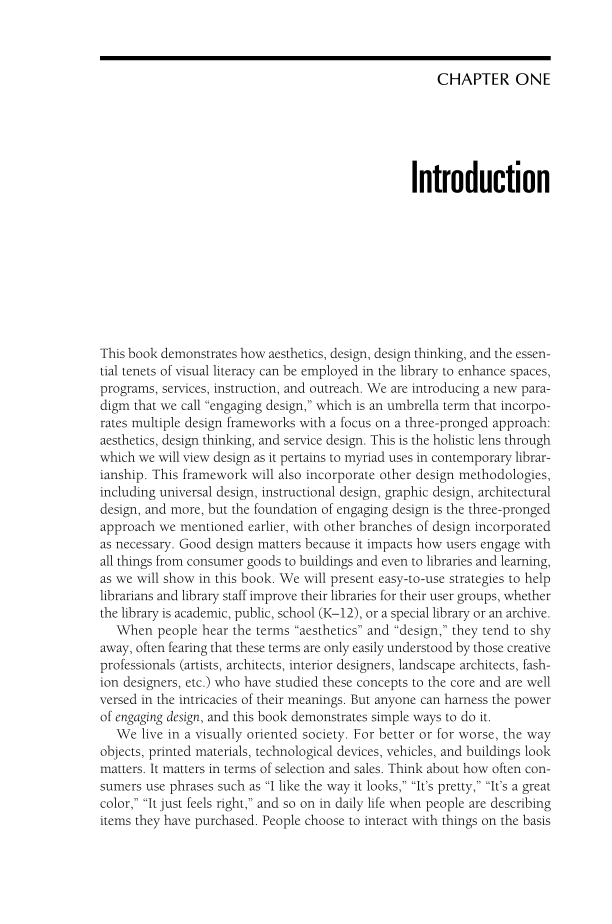CHAPTER ONE Introduction This book demonstrates how aesthetics, design, design thinking, and the essen- tial tenets of visual literacy can be employed in the library to enhance spaces, programs, services, instruction, and outreach. We are introducing a new para- digm that we call “engaging design,” which is an umbrella term that incorpo- rates multiple design frameworks with a focus on a three-pronged approach: aesthetics, design thinking, and service design. This is the holistic lens through which we will view design as it pertains to myriad uses in contemporary librar- ianship. This framework will also incorporate other design methodologies, including universal design, instructional design, graphic design, architectural design, and more, but the foundation of engaging design is the three-pronged approach we mentioned earlier, with other branches of design incorporated as necessary. Good design matters because it impacts how users engage with all things from consumer goods to buildings and even to libraries and learning, as we will show in this book. We will present easy-to-use strategies to help librarians and library staff improve their libraries for their user groups, whether the library is academic, public, school (K–12), or a special library or an archive. When people hear the terms “aesthetics” and “design,” they tend to shy away, often fearing that these terms are only easily understood by those creative professionals (artists, architects, interior designers, landscape architects, fash- ion designers, etc.) who have studied these concepts to the core and are well versed in the intricacies of their meanings. But anyone can harness the power of engaging design, and this book demonstrates simple ways to do it. We live in a visually oriented society. For better or for worse, the way objects, printed materials, technological devices, vehicles, and buildings look matters. It matters in terms of selection and sales. Think about how often con- sumers use phrases such as “I like the way it looks,” “It’s pretty,” “It’s a great color,” “It just feels right,” and so on in daily life when people are describing items they have purchased. People choose to interact with things on the basis
Document Details My Account Print multiple pages
Print
You have printed 0 times in the last 24 hours.
Your print count will reset on at .
You may print 0 more time(s) before then.
You may print a maximum of 0 pages at a time.









































































































































































